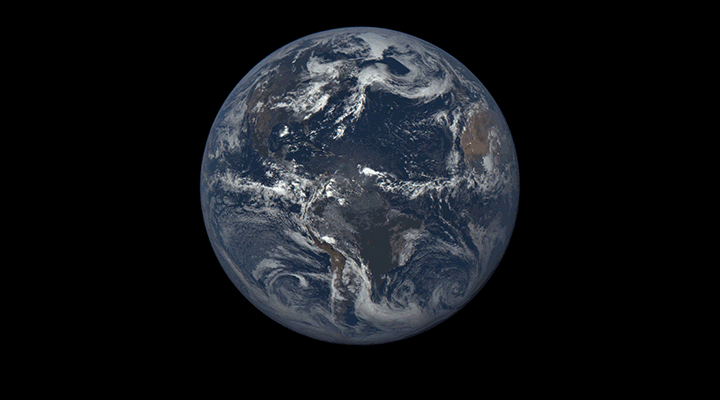News•December 14, 2015
NASA Tracks Ships and Dust From 1 Million Miles Away

By Brian Kahn
Sometimes you have to step back to see the fine details. And sometimes you have to step (or fly) way back. Like a million miles back.
DSCOVR — shorthand for Deep Space Climate Observatory — is providing NASA with that long view. Consider it the world’s longest selfie stick.
A daily view of Earth from 1 million miles away.
Credit: NASA

The location allows it to keep a continuous eye on the sunny side of Earth and its brilliantly-acronymed Earth Polychromatic Imaging Camera (EPIC) has been sending back images since reaching orbit in July.
RELATEDZombie Satellite Comes Alive In New Life as DSCOVR
These Tiny Satellites Could Keep an Eye on Wildfires
A New Blue Marble Every Day, Courtesy of NASA
Because the satellite sits so far from Earth, it provides the long view on a number of processes crucial to climate. In comparison, low-Earth orbiting satellites only capture a portion of these processes. Scientists highlighted some of the advances their making with DSCOVR at a press conference on Monday at the American Geophysical Union’s annual fall meeting.
One of the key advances is monitoring the movement of dust particles from the Sahara across the Atlantic. Scientists know that the dust provides crucial nutrients to the Amazon rainforest. The Amazon sucks up massive amounts of carbon dioxide, and if nutrients from dust decrease over time, it could bode ill for what some have called the lungs of the planet.
Scientists were also surprised to discover that the satellite could see ship tracks even though it’s a million miles from home. Ship tracks are essentially an atmospheric wake for ships traveling across the ocean. Particles in their exhaust attract water vapor and form streaks of marine clouds that can stretch for hundreds of miles.
Ship tracks seen from DSCOVR.
Credit: NASA

Alexander Marshak, DSCOVR deputy project scientist, said that the ship tracks themselves aren’t necessarily a huge part of climate change (though marine clouds are considered one form of geoengineering). But because they occur in isolated areas, they can tell scientists a lot about how other particles — called aerosols — in urban areas and elsewhere interact with clouds. Scientists generally know that aerosols tend to cool the planet, but how much and their impacts on clouds is still a very intense area of research.
Jay Herman, a NASA scientists working on the project, said NASA and its satellite partner, the National Oceanic and Atmospheric Administration, are still calibrating DSCOVR’s instruments and data. But once the calibration is complete, scientists will be able to plug data on ice, clouds, vegetation and other variables into climate models and offer an even clearer picture of Earth’s future from a little closer to home.
You May Also Like:
Study Says ‘Hydricity’ Could Boost the Use of Renewables
World Unites, Delivers Hopeful Climate Deal
Climate Pact Sees the Forest and the Trees
Global Climate Deal ‘Close to Finishing Line’
